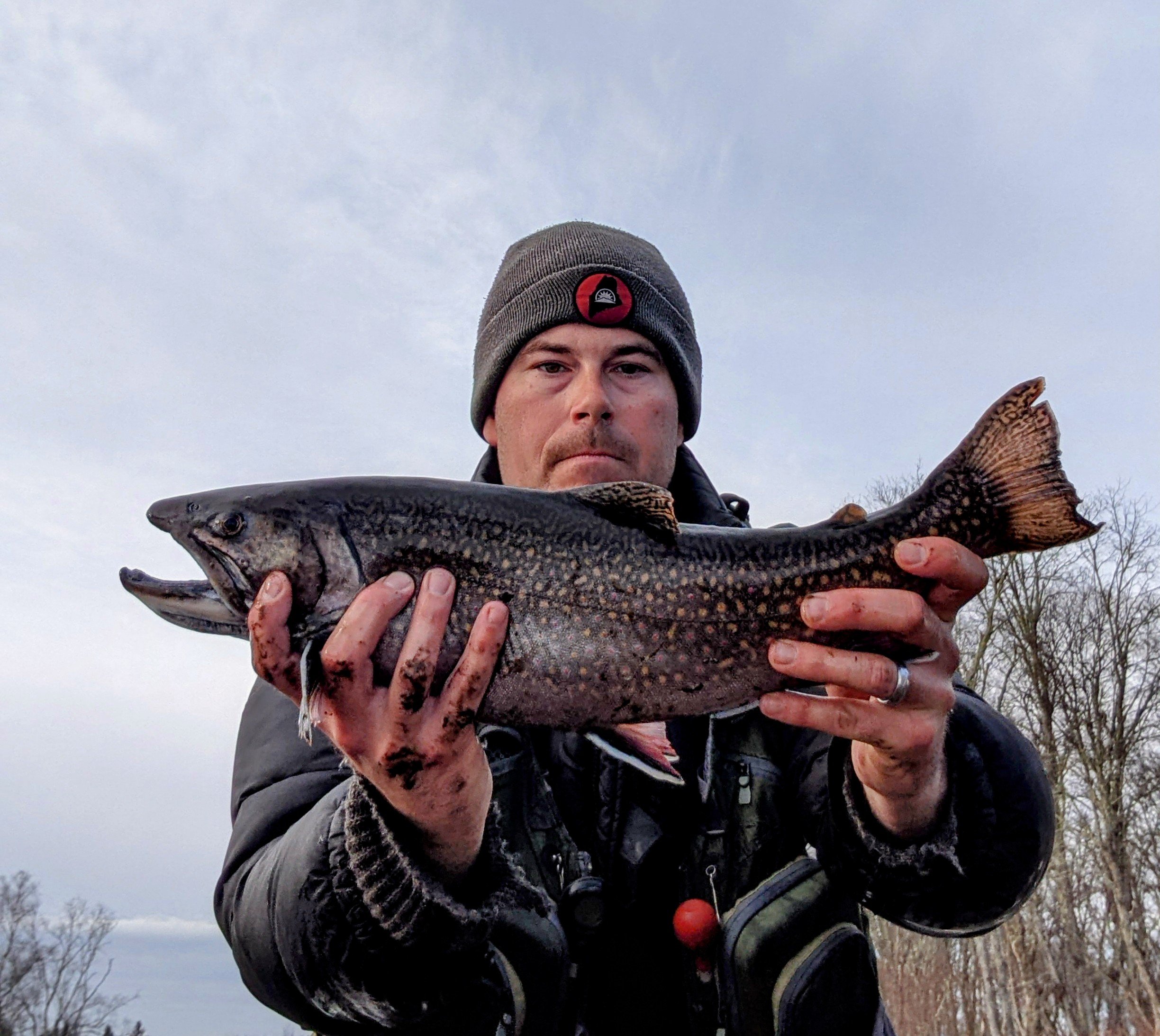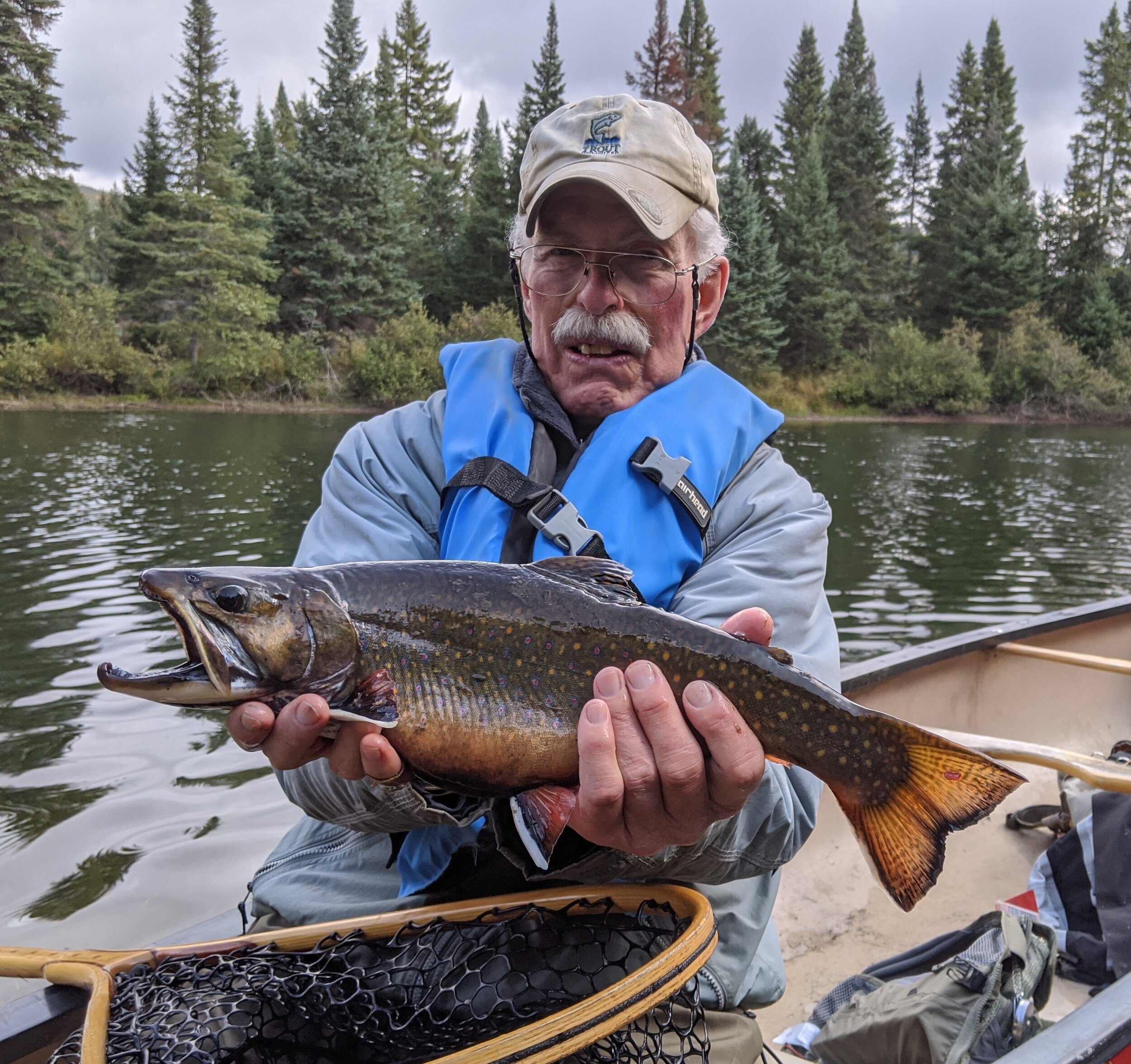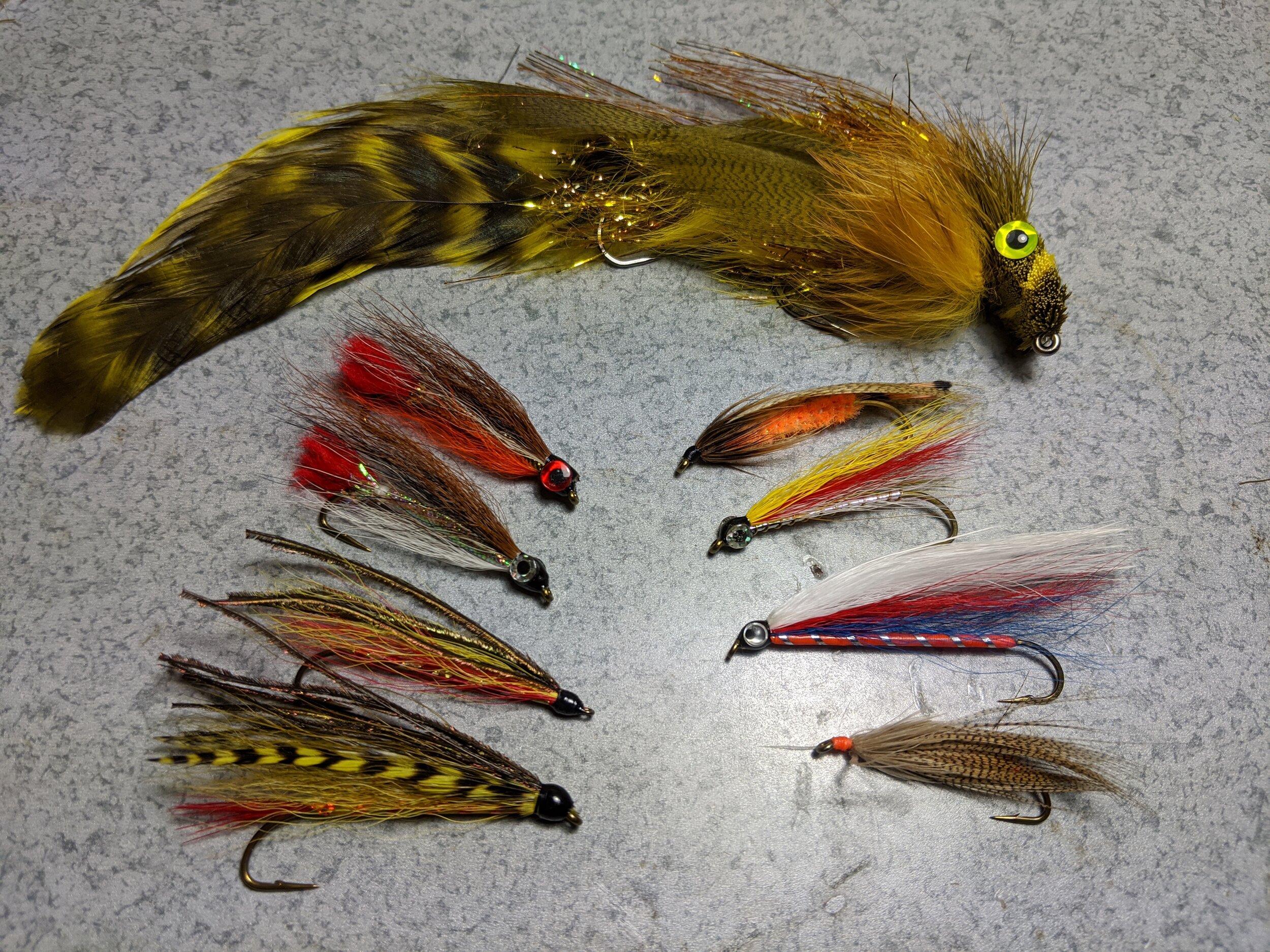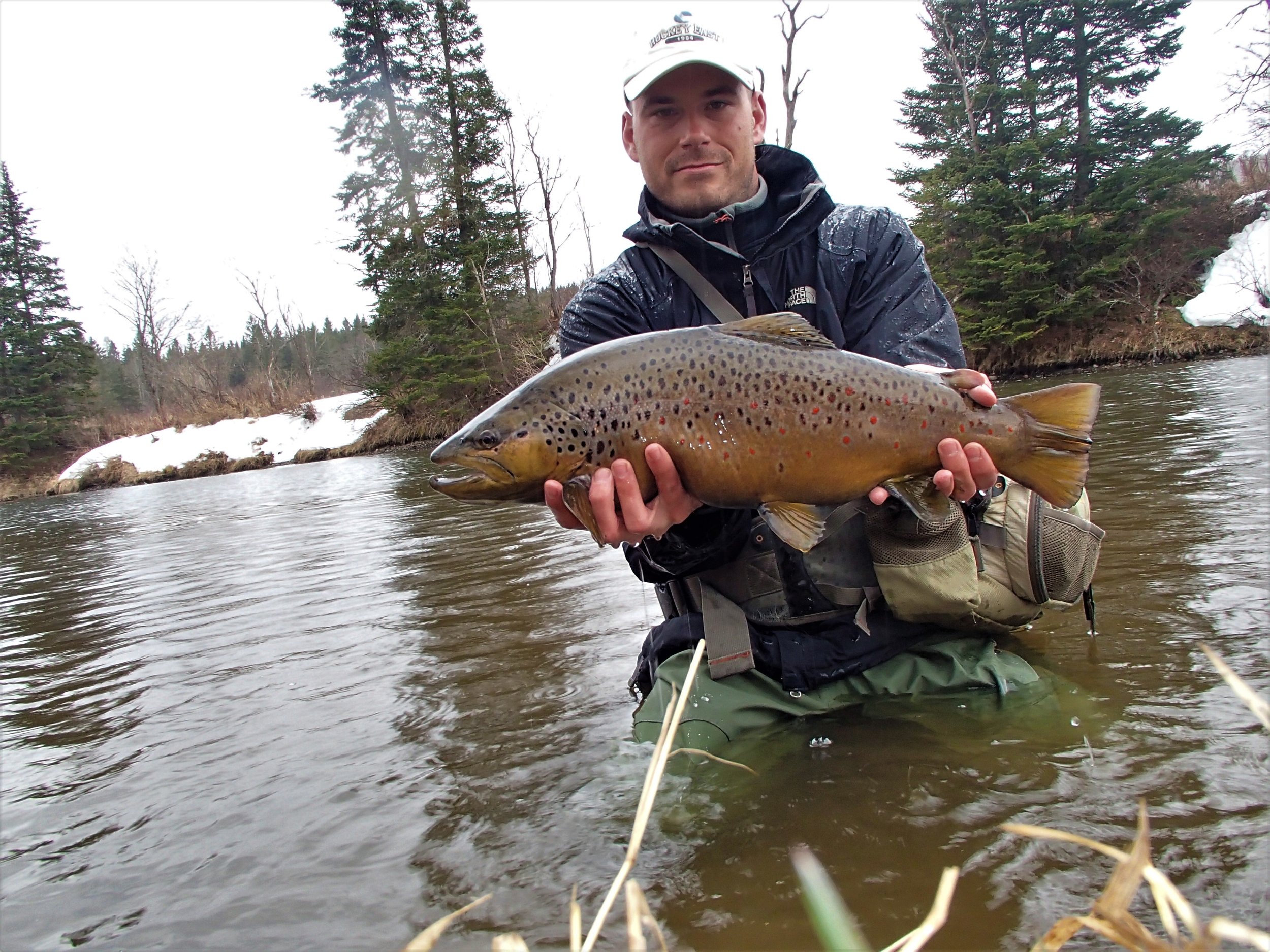Wow! Where does the time go? Hard to believe I haven’t had a chance to update this page in almost two years! Amazing how things come up and the time slips away from me. But anyways, I’m still here and I figured it’s time to get caught up and let you all know what’s coming in the future. There’s a lot to get to, so here we go…
A nice Autumn Brookie from a beautiful September morning.
2022 was a great season. Definitely the highlight of my guiding career. Good water conditions from start to finish resulted in reliable fishing throughout the season, and I had many memorable trips with great clients both old and new. I did my most trips ever, and things were looking bright for 2023.
A handsome Brown Trout from an early January outing. Winter fishing was hit or miss for me in 22/23. Higher than average flows seemed to have the fish cold and well fed during the cold months. Fishing didn’t really pick up for me until March.
I started my 2023 season as always, tying flies and trying to get on the water whenever time and weather allowed. I had a couple good trips in early January, which is typical, but higher than average flows on the rivers I fish seemed to slow things down after that. February was a slow month for me, and things didn’t really pick up until warmer weather materialized in March.
Early in the Winter, I also received the news I had been dreading for a long time; Bosebuck Mountain Camps had sold, and the new owner would not be opening for the 2023 season. It was a big blow, but I knew it would come at some point. I really enjoyed my time working for Mike and Wendy, and I owe them a huge thanks for 5 great years.
So sadly I wouldn’t have my favorite place to guide for 2023, but these things happen, and I had to look to book more of my own clients and prepared for an enjoyable season guiding on all my other local waters.
So early Spring 2023 was spent booking trips, and feeding my own fishing addiction while I waited for the nicer weather. I had some memorable days streamer fishing with my friend Mason at White Mountain Anglers. We found some angry browns and bows willing to smash big flies in New Hampshire.
Maine Brook Trout season kicked off in April as always with some great fish. Got a few regulars out on the water too and had some memorable guided trips. I cant recommend April fishing enough. It’s probably my favorite month to fish. The weather can be miserable and unpredictable, but man oh man can the fishing be worth it…
A heavy-bodied, 21 inch Native Brook Trout was worth the cold fingers on an early April morning.
May kicked off the start of my busy season, and it didn’t disappoint. Good conditions resulted in some very solid trips. Lots of fish, and lots of big fish. Some rain late in the month blew the float fishing out for a few days, but wade trips and stillwater trips were excellent.
June was good. Pleasant weather made for reliable hatches and the fishing was pretty darn solid right through the month.
A gorgeous Spring Native Brook Trout for longtime client John Molloy. Great story behind this fish too…
Early Summer saw the return on hot weather, but flows remained good on our smaller waters. Had some good evening trips guiding the Hex hatch on various North Country ponds, and spent the daytime hiding on shady mountain streams chasing little native Brook Trout and some wild Rainbow Trout.
Cool weather returned for late August and early September, and there was some good early “Fall” fishing. Dry, sunny conditions slowed things a bit for mid-September, but rain late in the month ended the Maine regular fishing season on a high note.
October fishing was good. Floats and wades on the rivers went as the weather went, but the Stillwater fishing was on fire.
Jeff Woodcock with an Autumn stunner. Jeff had never held a fly rod before September 2019. Now he probably catches more quality fish than nearly anyone I take out. The secret? He practiced his casting. Lobbing bobbers from a driftboat is nice, and slinging jigs on a euro-setup makes you cool I guess…but if you want to become a well rounded angler that catches quality fish in any scenario, practice casting that fly line…
My guiding season wrapped up in late October, and I spent the last few weeks of nice weather trying to get in some last minute fishing of my own. The late season stillwater fishing was just exceptional, and I even got a chance to scout some new ponds with some very exciting potential.
Halloween weekend I went south and had a chance to do some fall Brown Trout fishing. Had a great weekend in Western Massachusetts slinging streamers for browns.
November was mostly stillwater fishing for me. I tried to get out every chance I could until freeze-up.
Had a really great time on a guided float trip with Brian Gilbert of Hilltown Anglers/Western Mass Guide Service. Brian is an outstanding guide and knows his local waters well. Most of the local mature Brown Trout were off spawning, but grinding through cold, wind driven rain still produced an outstanding day with lots of fish and a few quality ones at that. I recommend Brian highly if you are looking to fish any of the great waters in Western Massachusetts.
Overall, 2023 was a great season. But as my first season in 10 years without doing any trips for a sporting camp, it offered some challenges that I needed to reflect on.
My trip numbers went down slightly for the first time ever. While I still had a very solid season, it was a grind trying to scrounge up enough business to make a full-time living as I compete with an ever increasing number of new guides, on waters that are becoming more crowded with each passing season. So as 2023 came to a close, it was time to make a decision…
Most of my clients know that as long as I have been guiding, I have spent my Winter season employed at the ski resort, Sunday River. After a decade as a part-time winter employee, my boss is retiring and Sunday River has asked that I take her place as a full time department manager. After careful consideration, I have decided to accept this promotion.
Now, this doesn’t mean that my guiding career is over. In fact, far from it. The best part about my new job is that it offers me the flexibility to continue guiding. But as I get settled into my new position, it will effect my 2024 season. Especially this Spring. So for this coming season, I will be guiding on a part-time basis, and will be limited to taking only returning clients. Trips I currently have on the books will be honored, and I will only be taking more trips on a limited basis. I hope that by Fall 2024 I will be settled in and able to guide on a more consistent basis, but I will have to update you on that a little later on.
I’m excited for this next chapter in my life. I believe this is the best decision for me at this time, and I’m excited for the prospect of having more fishing time for myself for a little bit! You better believe I’ll be spending my time getting dialed in on some new and exciting waters…






































































